Development
The Fleuret was designed and built to compete in an order for the French Air Force for a two-seat jet trainer. [2] It was a side-by-side low mid-wing cantilever monoplane with a T-tail and powered by two 800 lbf (3.6kn) Turbomeca Marboré II turbojets. [1] The prototype with French test registration F-ZWRS first flew on 29 January 1953. [1] The aircraft was not ordered with the Air Force buying the Fouga CM.170 Magister instead and only one Fleuret was built. [2]
The Fleuret II an enlarged four-seat development was designed and produced as the MS.760 Paris. [1]
Indian Air Force tests
In March 1954, the sole prototype MS.755 was disassembled, crated and shipped to Begumpet Air Force Station, India, for tropical weather and trainer-suitability trials with the Indian Air Force.
The audio memoirs of IAF Wing Commander Donald George Michael detail how Morane-Saulnier's Chief Test Pilot, Monsieur Jean Cliquet, and a team of 4 or 5 technicians accompanied the aircraft.
The assigned IAF senior pilots were impressed with the MS.755 as a trainer, and ran a series of flight instruction tests where low time students with only 10 hours total flying experience transitioned to the jet and soloed with no problems. This led to further tests where zero-time students were taught to fly on the MS.755, and later on the two-place DH Vampire.
During a flight early in the program, the two IAF senior pilots caused concern with Morane-Saulnier personnel when they pulled 8.5 Gs out of a dive. This was a significantly higher loading than the factory test pilots had reached. The engines were immediately replaced with spares and sent to France for analysis, but it was determined that no damage had taken place to either the engines or the airframe.
The IAF tests of the MS.755 ended in June 1954 and the aircraft was then crated and shipped back to France. [3]

The Morane-Saulnier M.S.406 is a French fighter aircraft developed and manufactured by Morane-Saulnier starting in 1938. It was France's most numerous fighter during the Second World War and one of only two French designs to exceed 1,000 in number. At the beginning of the war, it was one of only two French-built aircraft capable of 400 km/h (250 mph) – the other being the Potez 630.
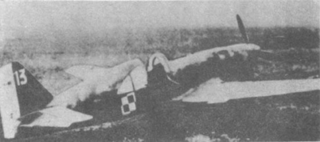
The C.710 were a series of light fighter aircraft developed by Caudron-Renault for the French Air Force just prior to the start of World War II. One version, the C.714, saw limited production, and were assigned to Polish pilots flying in France after the fall of Poland in 1939. A small number was also supplied to Finland.
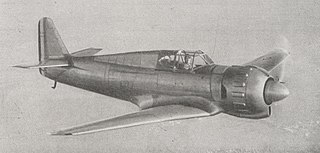
The Bloch MB.150 was a French fighter aircraft developed and produced by Société des Avions Marcel Bloch. It featured an all-metal construction, complete with a retractable undercarriage, low cantilever wing and a fully enclosed cockpit.

The Fouga CM.170 Magister is a 1950s French two-seat jet trainer aircraft that was developed and manufactured by French aircraft manufacturer Établissements Fouga & Cie. Easily recognizable by its V-tail, almost 1,000 have been built in France and under licence in West Germany, Israel, and Finland.
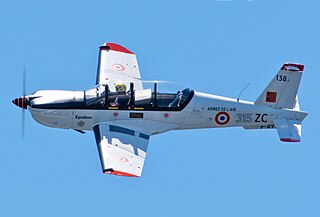
The Socata TB 30 Epsilon is a light military trainer aircraft produced by SOCATA. It is a tandem two-seater with a metal airframe. The first prototype flew on 22 December 1979.

The Morane-Saulnier MS.760 Paris is a French four-seat jet trainer and liaison aircraft designed and manufactured by Morane-Saulnier.

The Turbomeca Marboré is a small turbojet engine that was produced by Turbomeca from the 1950s into the 1970s. The most popular uses of this engine were in the Fouga CM.170 Magister and the Morane-Saulnier MS.760 Paris. It was also licensed for production in the United States as the Teledyne CAE J69.
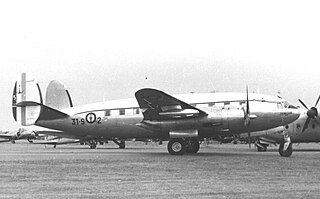
The Sud-Ouest S.O.30 Bretagne was a 1940s French airliner built by Sud-Ouest.
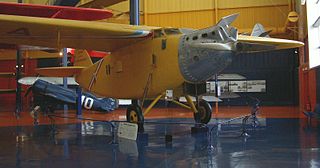
The Bernard 190 or Bernard-Hubert 190 was a French airliner of 1928. It was a high-wing cantilever monoplane of conventional configuration, based on the Bernard 18. Compared with its predecessor, it kept the same basic design but featured redesigned tail surfaces, an enlarged cabin, and offered its flight crew a completely enclosed cockpit. Also like its predecessor, the basic airliner model provided the basis for a long-range aircraft to be used in record attempts, the 191GR.

The Morane-Saulnier M.S.225 was a French fighter aircraft of the 1930s. It was produced in limited quantities to be used as a transitional aircraft between the last of the biplanes and the first monoplane fighters.

The Fouga CM.10 was an assault glider designed for the French Army shortly after World War II, capable of carrying 35 troops, later converted as a powered transport.
The Fouga CM.88 Gemeaux was a 1950s French engine test-bed aircraft produced by Fouga. An unusual aircraft, it was two aircraft joined by a common wing.

The Morane-Saulnier MS.230 aircraft was the main elementary trainer for the French Armée de l'Air throughout the 1930s. Almost all French pilots flying for the Armée de l'Air at the outbreak of World War II had had their earliest flight training in this machine. It was the equivalent of the Stearman trainer in the United States air services and the de Havilland Tiger Moth in the British Royal Air Force.

The Morane-Saulnier AR was a trainer aircraft produced in France during and after the First World War.

The Morane-Saulnier MS.129 and its derivatives in the MS.130 series were a family of military trainer aircraft produced in France in the 1920s.
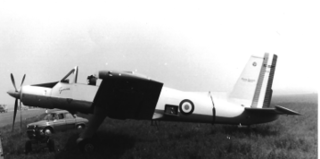
The Morane-Saulnier MS.1500 Épervier was a 1950s French two-seat ground attack and reconnaissance aircraft. Designed and built by Morane-Saulnier to meet a French Air Force requirement, it did not enter production.

The SNCASO SO.9000 Trident is a French mixed-power interceptor aircraft built by aircraft manufacturer SNCASO during the 1950s. As part of a wider effort to re-build French military power during the late 1940s and to furnish France with advanced, new domestically produced designs, a request for a supersonic-capable point-defence interceptor aircraft to equip the French Air Force was issued to SNCASO. In response, the firm designed the mixed-propulsion Trident, powered by a single SEPR rocket engine, which was augmented by wingtip-mounted turbojet engines, and the Air Force ordered two prototypes.
The SIPA S.300 was a French turbojet powered basic trainer, claimed to be the first of its kind anywhere. Only one was built, the prototype crashing after a year's development.

The Loire 250 was a French single-seat fighter monoplane designed and built by Loire Aviation of St. Nazaire.

The Morane-Saulnier MS.350 was a French aerobatic trainer flown in 1936. Only one was built but it had a long career, flying post-war until the 1960s.
This page is based on this
Wikipedia article Text is available under the
CC BY-SA 4.0 license; additional terms may apply.
Images, videos and audio are available under their respective licenses.


















